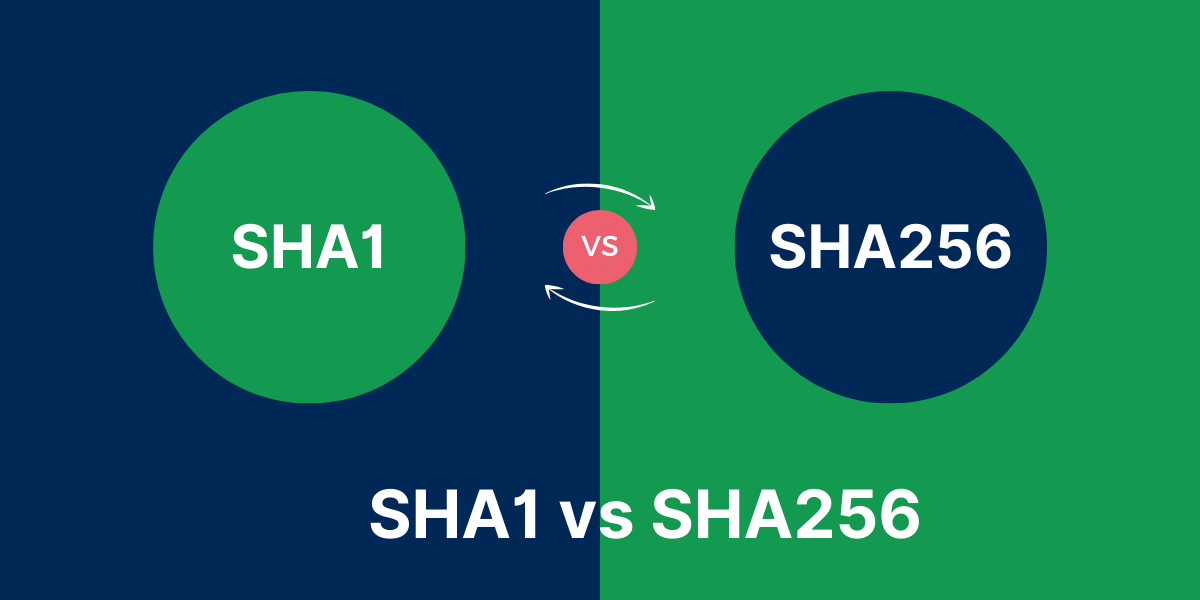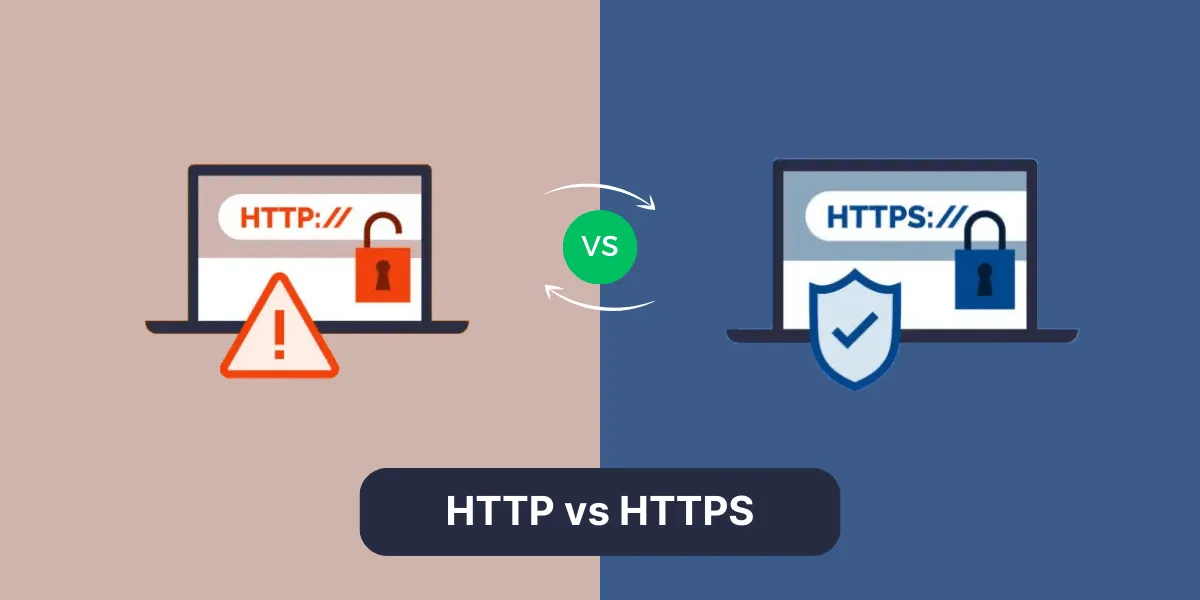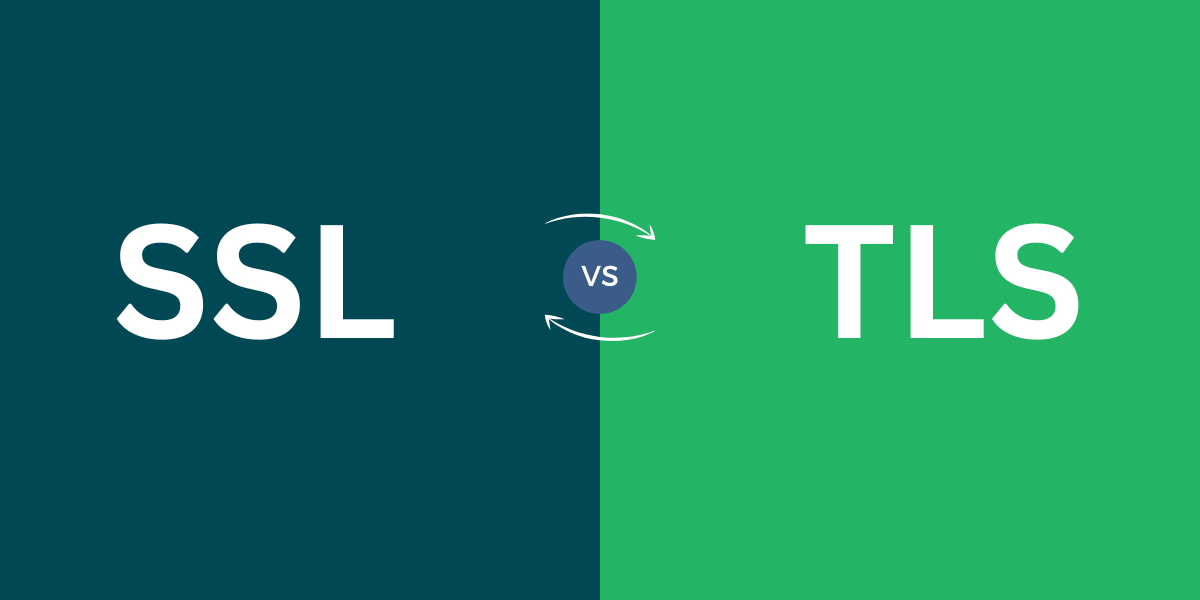Introduction to SHA1 and SHA256 Hashing Algorithms
Cryptographic hash functions like SHA1 and SHA256 are essential tools in cryptography and network security. They are used to verify data integrity, check password strength, digital signatures, message authentication codes, generating random strings and more.
SHA1 and SHA256 are two popular hashing algorithms part of the Secure Hash Algorithm (SHA) family designed by the National Security Agency (NSA). They generate a condensed representation of data referred to as a hash value, hash code or simply hash.
This article provides an in-depth comparison of SHA1 vs SHA256 hashing algorithms.
Head-to-Head Comparison between SHA1 vs SHA256
| Feature | SHA1 | SHA256 |
|---|---|---|
| Digest Size | 160 bits | 256 bits |
| Block Size | 512 bits | 512 bits |
| Word Size | 32 bits | 32 bits |
| Rounds | 80 | 64 |
| Hash Output | 40 hex characters | 64 hex characters |
| Vulnerabilities | Weaknesses found | More secure |
| Speed | Faster | Slower |
| Adoption | Legacy, being phased out | Widely used currently |
| Use Cases | Obsolete, don’t use | Digital signatures, SSL, etc |
| Standard | FIPS 180-4 (withdrawn) | FIPS 180-4 approved |
What is a Cryptographic Hash Function?
A cryptographic hash function takes an input of any length like a text file or password and produces a fixed length string as output. This output is called the hash value.
Hash functions have following properties:
- One-Way Function: It is practically impossible to reverse the hashing process and reconstruct the original data from the hash value.
- Deterministic: Same input always produces the same hash value. Even a slight change in input drastically changes the hash.
- Fast Computation: It is possible to efficiently compute hash values even for very large amounts of data.
- Collision Resistance: It is impractical to find two different inputs that produce the same hash value.
These properties make cryptographic hashes ideal for verifying integrity of data and authenticity of communications.
What is SHA1 Hash Function?
SHA1 (Secure Hash Algorithm 1) was designed by the NSA and published as a federal standard by NIST in 1995.
It generates a 160-bit hash value typically rendered as a 40 digit hexadecimal number.
The SHA1 algorithm is based on principles similar to those used by Ronald L. Rivest of MIT in the design of the MD4 and MD5 message digest algorithms.
SHA1 Hash Function Properties
- Produces 160-bit / 20-byte hash value
- Processes data in 512-bit blocks
- Iterative cryptographic hash function – uses compression function and message schedule
- Collision resistance of 2^80 operations
- Widely used in version control systems like GIT, verification of data transfers, checksum generation and more.
What is SHA256 Hash Function?
SHA256 or SHA-2 (Secure Hash Algorithm version 2) was published in 2001 by the NSA as a next generation hash function to replace SHA1.
It generates a 256-bit (32 bytes) hash value. The SHA2 family consists of six similar hash functions with digests (hash values) of 224, 256, 384 or 512 bits namely SHA224, SHA256, SHA384, SHA512, SHA512/224, SHA512/256.
SHA256 is one of the most widely used SHA2 algorithm. Bitcoin and other cryptocurrencies use SHA256 for verifying transactions and calculating proof of work.
SHA256 Hash Function Properties
- Produces 256-bit / 32-byte hash value
- Processes data in 512-bit blocks
- Iterative cryptographic hash function – uses compression function and message schedule
- Collision resistance of 2^128 operations
- Used in Blockchain, Bitcoin, password hashing, digital signatures, pseudorandom number generators and more.
SHA1 vs SHA256 – Key Differences
Now that we have understood what SHA1 and SHA256 are, let’s compare the key differences between the two hashing algorithms:
Hash Value Length
- SHA1 generates a 160-bit (20 byte) hash value.
- SHA256 produces a longer 256-bit (32 byte) hash value.
Longer hash length provides greater security against brute force attacks. Computing power increases over time making hashes vulnerable to collision attacks.
Collision Resistance
- SHA1 has a collision resistance of 2^80 operations. This means it would take 280 computations on average to find two different inputs that produce the same hash value.
- SHA256 has a significantly higher collision resistance of 2^128 operations.
In 2017, researchers demonstrated a practical SHA1 collision attack requiring just 2^63 operations. This shows SHA1 is not collision resistant anymore and reinforces that longer hash outputs are more resilient.
Speed
- SHA1 is slightly faster than SHA256. On modern processors, this difference is marginal in most applications.
- SHA256 employs a larger hash value and block size leading to slower performance. For constrained devices like microcontrollers, SHA1 may be preferable.
Security
- SHA1 is deprecated and should not be used for cryptographic purposes. It has known security vulnerabilities.
- SHA256 is secure and recommended by NIST for applications requiring collision resistance and one-way hashing.
Supported Hash Lengths
- SHA1 has a fixed output length of 160 bits only.
- The SHA2 family supports several hash lengths including 224, 256, 384 and 512 bits. This allows applications to choose an optimal level of security.
Adoption
- SHA1 usage is being phased out and replaced by SHA256 and other SHA2 variants.
- SHA256 is now widely adopted in blockchain, cryptocurrencies, signing, digital certificates and password hashing.
When to use SHA256 over SHA1?
Here are some recommendations on when to choose SHA256:
Cryptography & Security Applications
Any application that relies on cryptographic properties of hash functions like one-way hashing, collision resistance, pseudo-randomness should use SHA256 or other SHA2 variants.
SHA256 is more resilient against brute force attacks with its 256-bit output.
Password Hashing
SHA256 is recommended over SHA1 for password hashing. The increased hash length provides more protection against rainbow table attacks.
Adding a salt and multiple iterations makes password hashes like bcrypt even more secure.
Blockchains
All major blockchains including Bitcoin, Ethereum, Litecoin use SHA256 in their proof-of-work algorithms. The hashcash cost-functions rely on its cryptographic strength.
Digital Signatures
Digital signature schemes like ECDSA and EdDSA rely on cryptographic hash functions. SHA256 is more suitable than SHA1 for signing due to its collision resistance.
Version Control Systems
Git and Mercurial now use SHA256 instead of SHA1 for content authentication. The Github collision attack was a catalyst for this migration.
For non-cryptographic use cases like checksums and data integrity checks, SHA1 may still be acceptable.
When is SHA1 still acceptable to use?
Here are some examples where usage of SHA1 is still widespread:
Checksums
Using SHA1 for generating checksums to verify file downloads or data transfers can be acceptable in non-adversarial settings.
Though for stronger assurances, SHA256 is still preferable.
Datetime Fingerprints
Embedding date or timestamp in the hash inputs is a common technique to prevent hash collisions for non-cryptographic use cases.
Non-sensitive Data
Where collision resistance is not strictly required like internal checksums, fingerprints, basic integrity checks, SHA1 poses no risk.
Legacy Compatibility
Lots of old systems still rely on SHA1. Replacing SHA1 usage may not be feasible without major upgrades.
SHA1 should never be used for cryptography. But in other use cases, the risks associated with SHA1 need to be evaluated case-by-case before migrating to SHA256.
Real World Examples
Let’s look at some real world examples to see SHA1 and SHA256 hashes in action.
Hashing the text “Hello World”
SHA1: 2aae6c35c94fcfb415dbe95f408b9ce91ee846ed
SHA256: 64ec88ca00b268e5ba1a35678a1b5316d212f4f366b2477232534a8aeca37f3c
Hashing a PDF file
SHA1: 9b74ca61d2bf80312a083e7c0c51569c4915b631
SHA256: 3bca1afb503b985747f889610f6a419a4973a982e7b2d4f54f898dbf32e14049
Again, the length difference is evident. Just changing a few bits of the data significantly alters the hashes.
Bitcoin Block #100 Hash
SHA256: 0000000082b5015589a3fdf2d4baff403e6f0be035a5d9742c1cae6295464449
Conclusion on SHA1 vs SHA256
SHA1 and SHA256 are popular cryptographic hash functions but have crucial differences in terms of hash length, collision resistance, adoption and security.
For optimal security, SHA256 is recommended over SHA1 for cryptographic uses like password hashing, digital signatures, proof-of-work, pseudorandom number generation etc. due to its increased collision resistance and hash length.
Many systems like Git, Bitcoin, digital certificates have migrated from SHA1 to SHA256 because research exposed vulnerabilities in SHA1. For non-cryptographic use cases, SHA1 may still be acceptable depending on the risks involved.
When evaluating SHA1 vs SHA256, you need to analyze the attack vectors and risk tolerance for your specific application to determine which hash algorithm is most suitable. For broadly distributed data and communications, opting for the stronger SHA256 hash is advisable where feasible.
Frequently Asked Questions
Is SHA1 still secure?
No, SHA1 is considered insecure for cryptographic purposes. Collision attacks demonstrate it does not have the collision resistance expected from a secure cryptographic hash function.
Is SHA256 better than SHA1?
Yes, SHA256 is an improvement over SHA1 with a longer hash output, higher collision resistance and better security. SHA256 is recommended over SHA1.
Can SHA256 be cracked?
SHA256 has not been cracked yet and is considered secure. Brute force attacks are infeasible due to its 256-bit output. But its theoretical collision resistance is 2^128 operations, so future advances in quantum computing could potentially pose a risk.
Is SHA256 reversible?
No, SHA256 is a one-way cryptographic hash function. It is practically impossible to reverse a SHA256 hash to find the original input data.
What is the difference between SHA256 and SHA512?
SHA512 is also part of the SHA2 family but generates even longer 512-bit hash values. It provides enhanced security over SHA256 but at the cost of performance.
Should I use SHA256 or MD5?
MD5 is broken and insecure. You should always prefer SHA256 over MD5 for any cryptographic applications requiring collision resistance or one-way hashing.
Which hash function does Bitcoin use?
Bitcoin and many other cryptocurrencies use SHA256 in their proof-of-work mining algorithms to verify transactions and generate new blocks.
Hopefully this article helped you understand the key differences between the SHA1 and SHA256 hashing algorithms and when to use each one.



